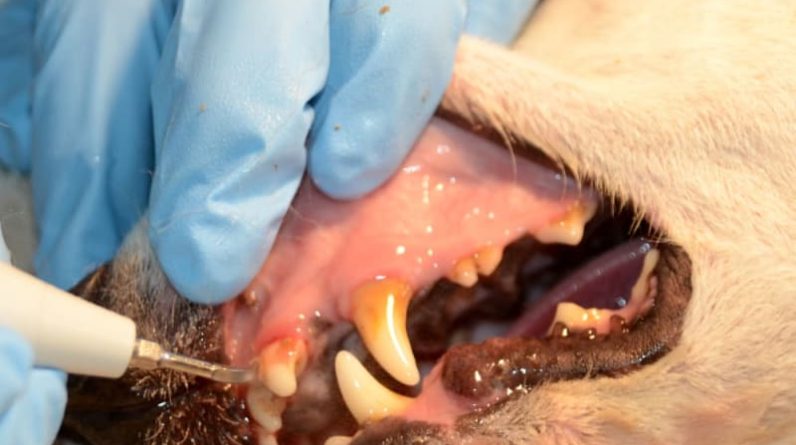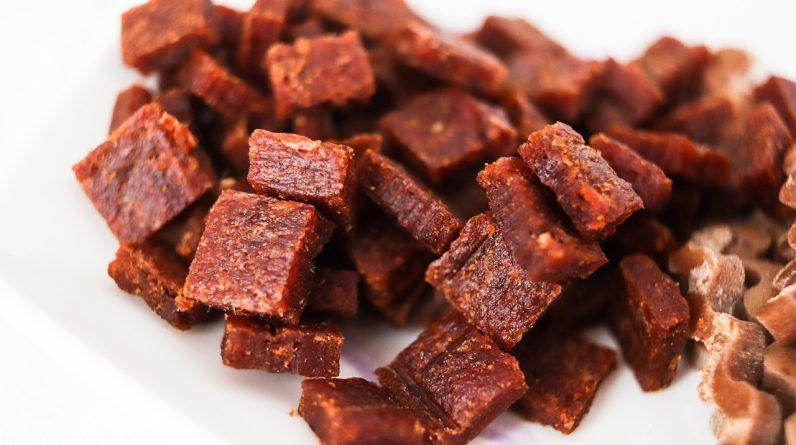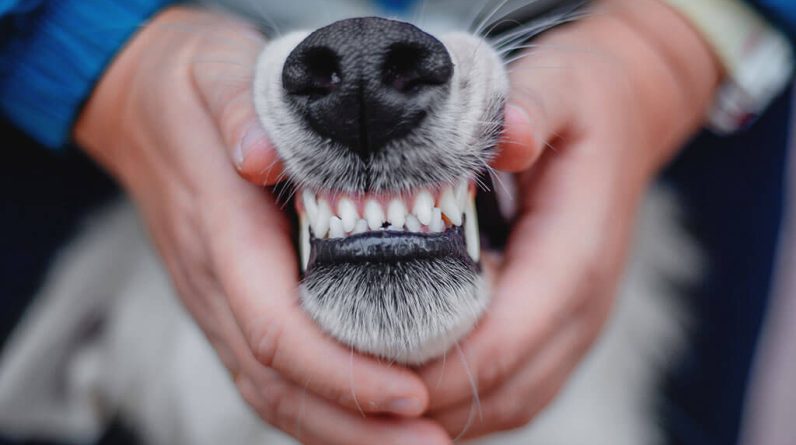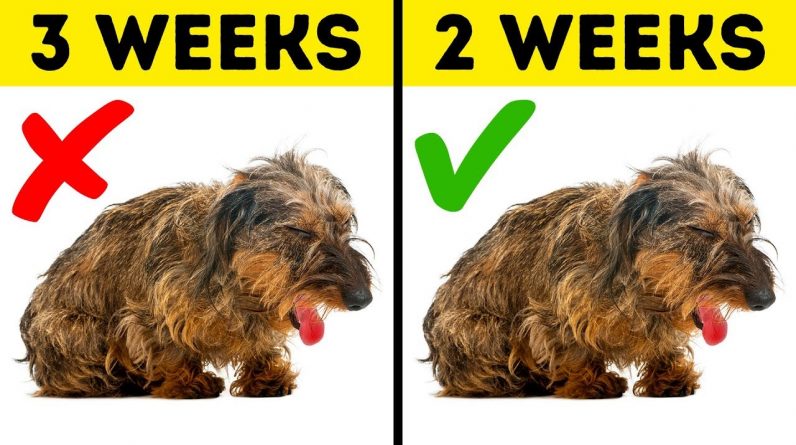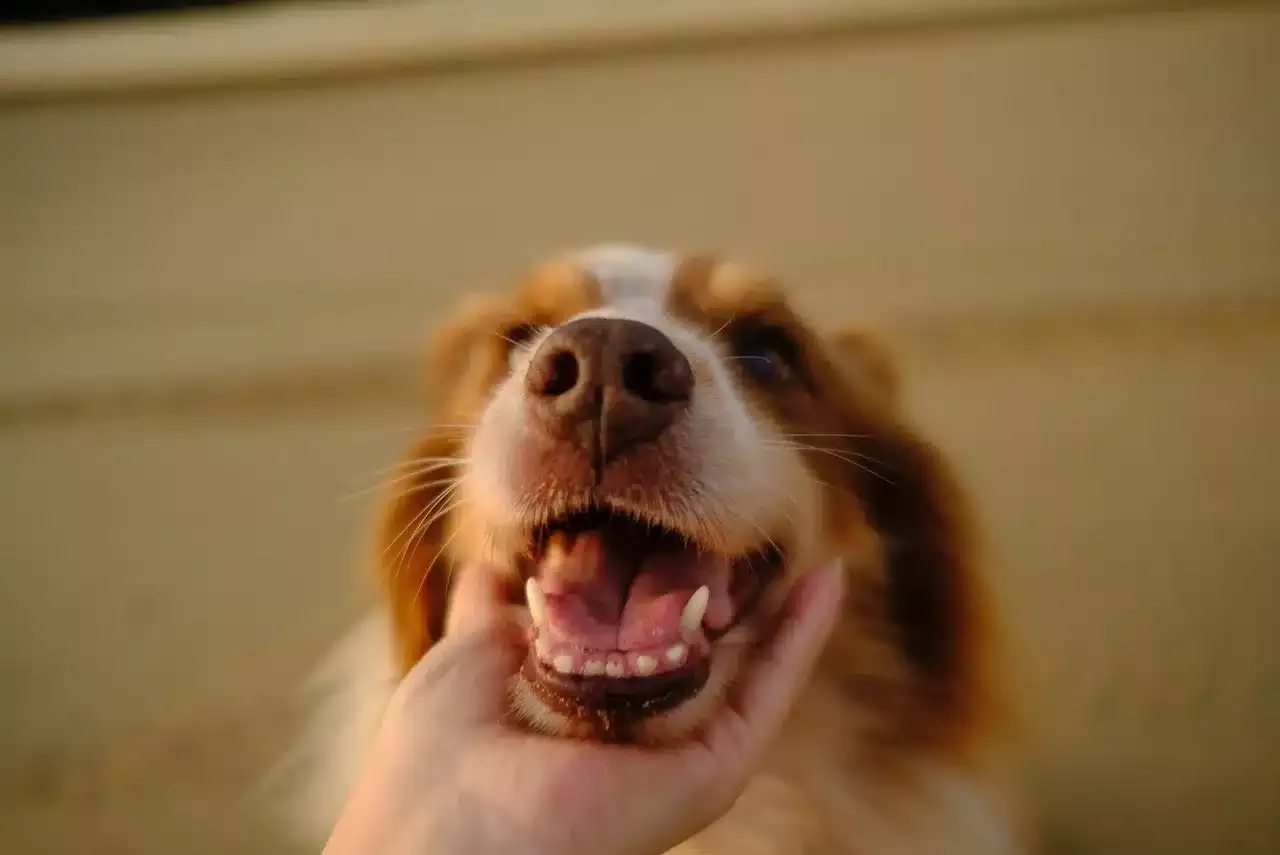
As you might be aware, the teeth of animals are distinctively suited to their particular diet. Pets are meat-eaters and have sharp teeth for tearing flesh and cutting food. However, have you ever wondered the number of teeth of each type a dog’s mouth consists of? If you’re curious, join us in this short article as we talk about how many teeth do dogs have.
You may likewise be interested in the: Can pet dogs consume hummus? What are the best alternatives to chickpeas for my dog?

The number of teeth do dogs have? Pets, similar to humans, are heterodonts, which indicates they have teeth that are available in various sizes and shapes. Our beloved canine companions specifically have 4 kinds of teeth: incisors, dogs (or fangs), premolars, and molars. The oral formula is a chart that shows how many teeth an animal has of each kind. To interpret this diagram, we require to consider the following points:
- Teeth are numbered in the following order: incisors (I), canines (C), premolars (P), and molars (M).
- The numerator refers to the upper arch (maxilla), while the bottom number pertains to the lower arch (mandibular).
The oral formula shows teeth on one side (left or right) and both sides have the exact same number of teeth.
- This is since the mouth is symmetrical.
- Therefore, to identify the total variety of teeth in pets, we require to multiply the oral formula by two.
Interpreting Diagrams to Determine the Variety Of Teeth in Puppies and Canines.
Now that we have clarified these points, we can expose the oral formula of pet dogs. Dogs have two sets of teeth, baby (milk) teeth, and adult (permanent) teeth, and each set has a various oral formula.
For that reason, we require to deal with the number of teeth in young puppies and adult canines independently.
The main dentition of canines follows the formula: 2x(I 3/3, C 1/1, P 3/3). This implies that young puppies have a total of 28 teeth. Meanwhile, the irreversible dentition of pet dogs follows the formula: 2x(I 3/3, C 1/1, P 4/4, M 2/3). This indicates that adult pets have an overall of 42 teeth.
With an understanding of how to interpret these diagrams, we can easily answer concerns such as:
- The number of teeth does a pup have? To discover, we include the bottom numbers and increase the result by two. For instance, young puppies have (3 +1 +3) x 2 = 14 teeth in the mandibular arch.
How many teeth does a dog have? To determine the variety of molars in a dental formula, we take a look at the fraction of molars. The numerator demonstrates how numerous upper molars there are, and the bottom number shows how numerous lower molars there are.
- For instance, adult pet dogs have 2 × 2=4 molars in the maxilla and 3 × 2=6 molars in the mandible. For that reason, they have a total of 10 molars.
Do pets have milk teeth?
Now that you have found out about the number of teeth in adult canines, let’s look into milk teeth. As we mentioned previously, pets do have milk teeth. This is since they have two sets of teeth:
- As we talked about previously, the deciduous or main dentition includes 28 teeth, typically known as “milk dentition.”
- Irreversible or definitive dentition: made up of 42 teeth.
Canines start growing their irreversible teeth at 3 months old and surface by 6 or 7 months old. Pet dogs start growing their irreversible teeth at three months old.
- The first teeth to appear are the central incisors at three months old.
- The middle incisors come in at 4 months old.
- The lateral incisors been available in at five months old.
Canine teeth and premolars are replaced in between 4 to 6 months, and molars are replaced in between 5 to 7 months.
Read likewise: Can pet dogs consume Cheetos? Is Cheetos damaging to pets?
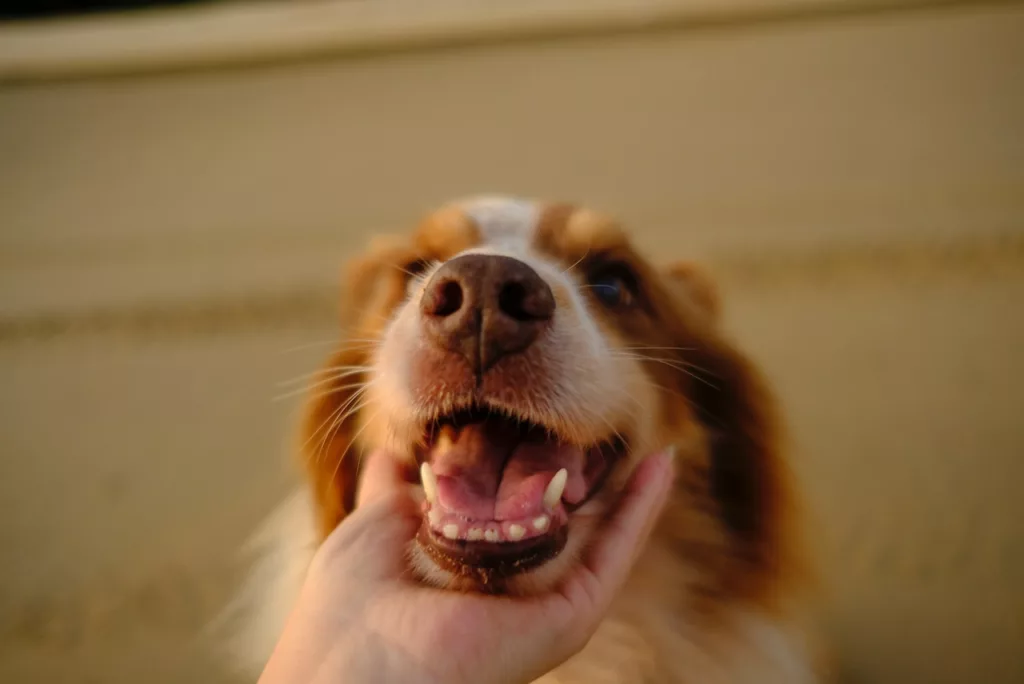
How do canines’ teeth look? Let’s go over the primary attributes of a canine’s teeth in more information. Dogs’teeth consist of three parts: the noticeable part (crown ), the embedded part(
root), and the border(neck)in between. Dentin primarily makes up both the crown and the root of a canine’s tooth. Dentin mainly composes both the crown and the root of a pet’s tooth. The crown of a tooth is covered by the hardest and most solidified minerals tissue in the body, called enamel. The root is covered by a tissue comparable to bone, called cementum.
The center of each tooth has something called the dental pulp. The dental pulp has nerves, capillary, connective tissue, and cells that make dentin.
The supports and holds each tooth and includes the gum, gum-related ligament, cementum that covers the root, and alveolar bone.
While all pet dog teeth have the exact same structure and composition, each kind of tooth has specific characteristics:
-The incisors have short crowns, unique necks, and a single root.
-The dogs are large, conical, and curved, with a single root. The interdental area called a diastema separates them from the lateral incisor.
-The premolars differ in size and variety of roots. The very first premolar is smaller sized and has only one root, while the fourth premolar is significantly larger and has 3 roots.
-The molars are the most caudal teeth, and their number of roots differs in between one and 3.
Finally, let’s define some terms that identify canine teeth. Pet dogs are:
-Difiodonts, which implies they have two sets of teeth (primary and permanent).
-Anelodonts, which implies that their teeth do not grow continuously like those of other animals, such as rabbits.
-Brachyodonts suggest that the roots of a canine’s teeth are longer than the crowns.

When a pet dog loses a tooth,
what takes place? Naturally, pets that have healthy teeth need to keep all their teeth for their whole life. However, it is possible that some pathologies or oral cavity changes may occur, leading to the loss of a tooth. Pet dogs with severe gum disease or mouth injuries typically face this issue.
In any case, the loss of a dental piece always happens due to a related to illness or disorder caused. So, if something like that occurs, it’s important to take the dog to a veterinarian clinic. The vet can figure out what’s triggering the problem and advise the best treatment.
On one hand, the veterinarian must deal with the main cause that caused tooth loss. On the other hand, the vet may think about surgical treatment to change the missing out on tooth with an implant. Nevertheless, this treatment is not normally carried out frequently and is normally scheduled as an option for competitors or working pet dogs.
Conclusion: How many teeth do pet dogs have
Like people, dogs have different types of teeth that match their diet plan distinctively. There are four types of teeth: incisors, canines, premolars, and molars. Pet dogs have 2 kinds of teeth, primary (milk) and long-term teeth, each with a different oral formula.
Young puppies have an overall of 28 teeth, while adult pet dogs have an overall of 42 42 long-term teeth. Dentin mostly composes all 3 distinct parts of pet dogs’ teeth, including the crown, the root, and the neck. Understanding the dental formula can help us count a pet dog’s teeth because various teeth have various looks and functions.
Recommendations:
— World Small Animal Veterinary Association (WSAVA)
-Dental care for your canines (PDSA)
-Phots By Pexels
Discover the dental formula and discover the number of teeth do pet dogs have. Pups have 28 milk teeth while adult canines have 42 irreversible teeth.


